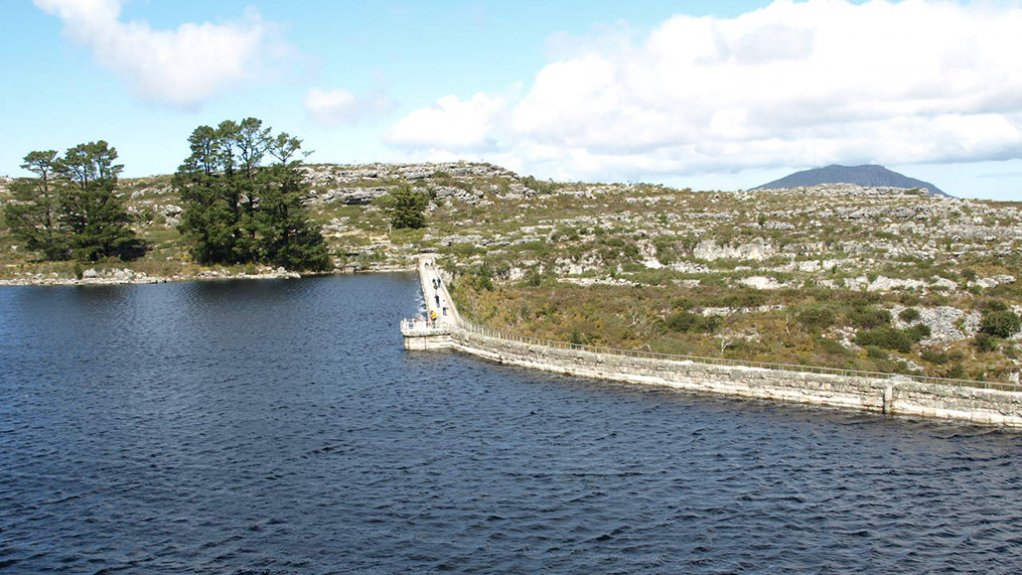/ MEDIA STATEMENT / The content on this page is not written by Polity.org.za, but is supplied by third parties. This content does not constitute news reporting by Polity.org.za.
For 126 years, this dam has supplied residents with water in their homes – at one period, it was even the main source of water to the city. The City acknowledges the role of this majestic structure in servicing Cape Town’s residents during Heritage Month. Read more below:
This year the City of Cape Town celebrates the 126th anniversary of the Woodhead Dam.
The idea for the dam came about in the early 1890s as a solution to two problems:
A water tunnel was built through the Twelve Apostles, between 1887 and 1891, to access the Disa River, but a storage dam was needed to ensure supply throughout the year.
It was a response to Cape Town’s water shortage in the 1850s.
Now having stood on Table Mountain for 126 years, the first idea for Woodhead Dam came to life in the late 1890s after colonial hydraulic engineer John Gamble showed that the rainfall in the area made a dam feasible.
Despite initial hesitation from the City, whose officials were concerned about the cost, a young Scottish engineer named Tom Stewart was appointed to design and build the dam.
Starting the project was no easy feat as the challenge to get workers, equipment and cement to the building site was made apparent. The solution: possibly the first ‘cableway’ from Camps Bay to Kasteelpoort and then rail tracks, with a steam locomotive to transport workers and materials, at the summit of Table Mountain to the construction site on the ‘Back Table’ of the mountain.
Machinery and fittings were imported from Scotland, along with skilled stonemasons and quarrymen, as well as local labour (the construction was very labour intensive) and also a steam crane which was imported from Wales to power the cableway. Work then began in 1894 and ended in 1898, just as another water shortage hit Cape Town. Construction on another reservoir, the Hely-Hutchinson dam, later began upstream of the first, as well as three additional smaller dams over time.
The two main dams each hold about a million cubic metres of water and are still in service, contributing about 1% of Cape Town’s needs today.
In 2008, marking the centenary of the Woodhead Dam in 2007, the American Society of Civil Engineers (ASCE) marked the Woodhead Dam as an International Civil Engineering Landmark for its innovation and longstanding service in South Africa.
‘The history of Woodhead Dam is clearly still very relevant to the issues we’ve faced in Cape Town recently, with 2018’s drought still fresh in the back of our minds.
‘With this structure having stood the test of time and still serving Cape Town today – even though we’ve greatly increased our capacity since then – it just goes to show the resilience of our people and our city.
‘It also shows that the City is committed to building resilient infrastructure to last and to providing quality basic services, with the construction of all our main dams today.
‘Going forward, the City remains committed to building a water-resilient future. Due to climate change, Cape Town has learnt that we cannot solely rely on dams for water security in future. That’s why the City is investing in its New Water Programme, to help reduce Cape Town's dependence on rainfall and dam storage as our primary water supply to navigate future climate shocks and droughts. The City plans to bring an extra daily 300 million litres of water online from other sources by 2030,’ said the Mayoral Committee Member for Water and Sanitation, Councillor Zahid Badroodien.
Issued by The City of Cape Town
EMAIL THIS ARTICLE SAVE THIS ARTICLE ARTICLE ENQUIRY
To subscribe email subscriptions@creamermedia.co.za or click here
To advertise email advertising@creamermedia.co.za or click here











